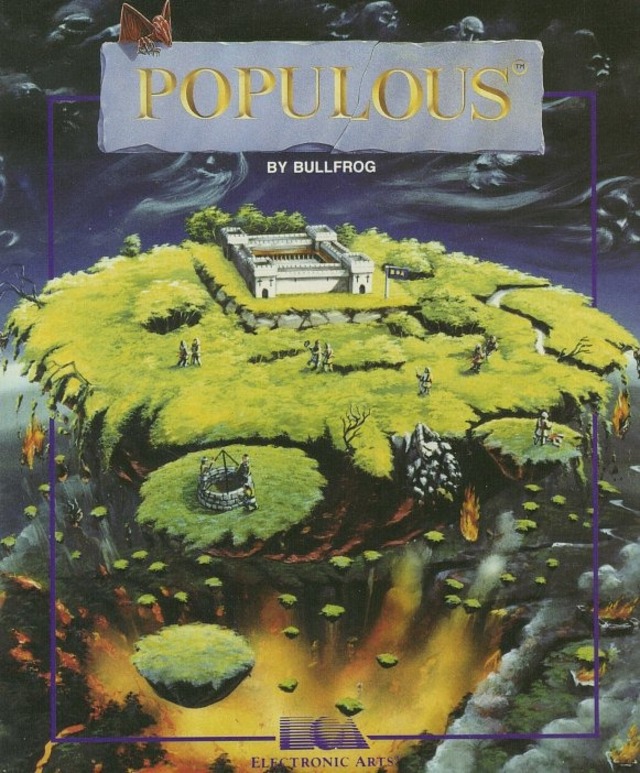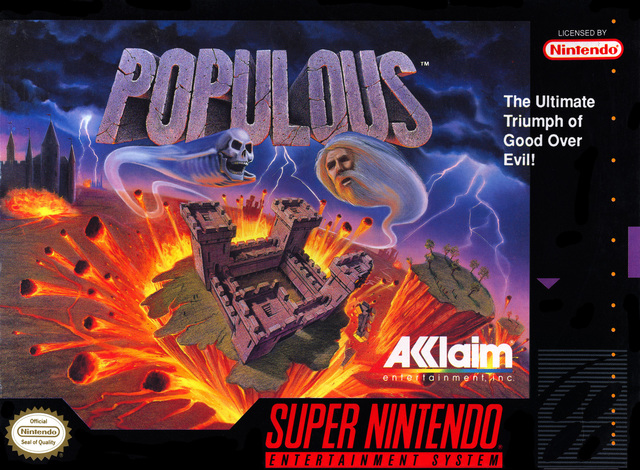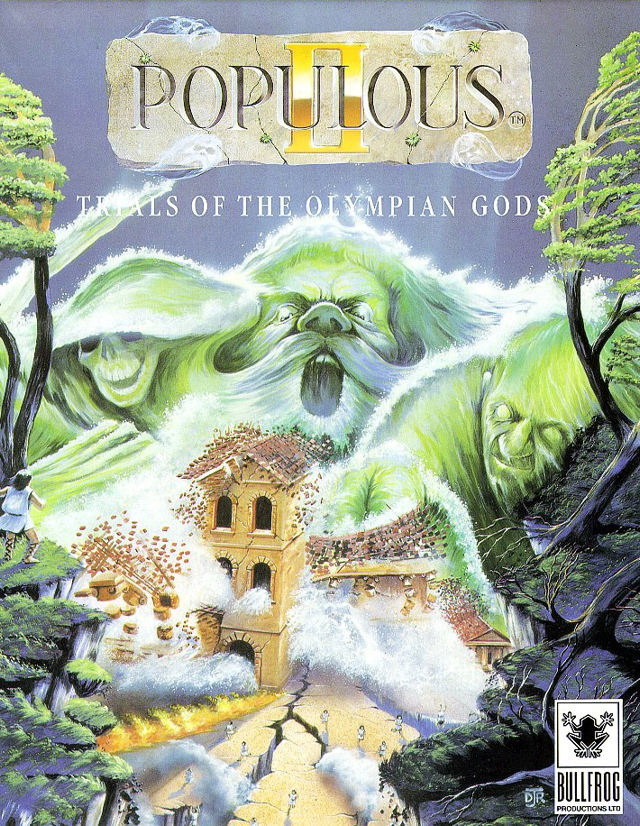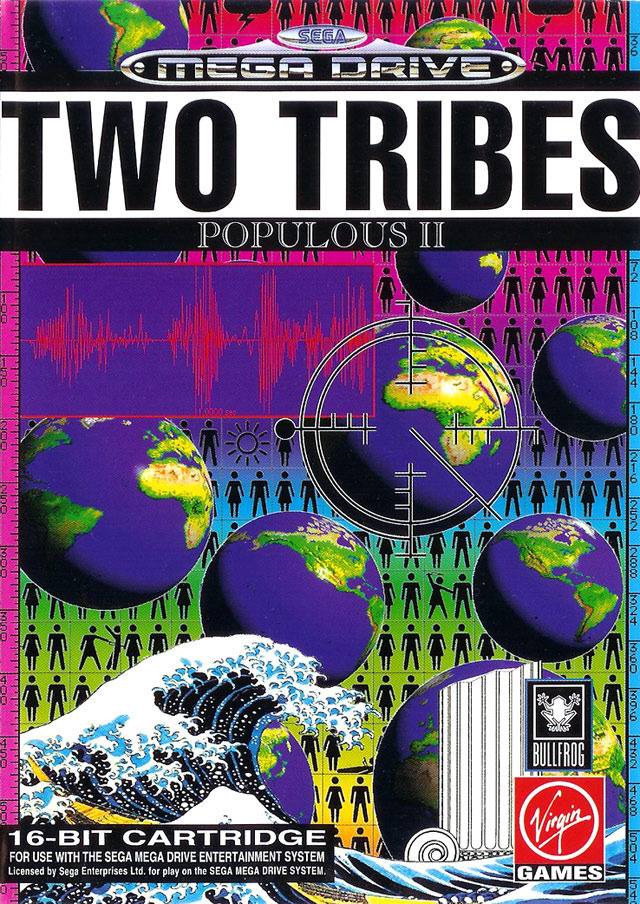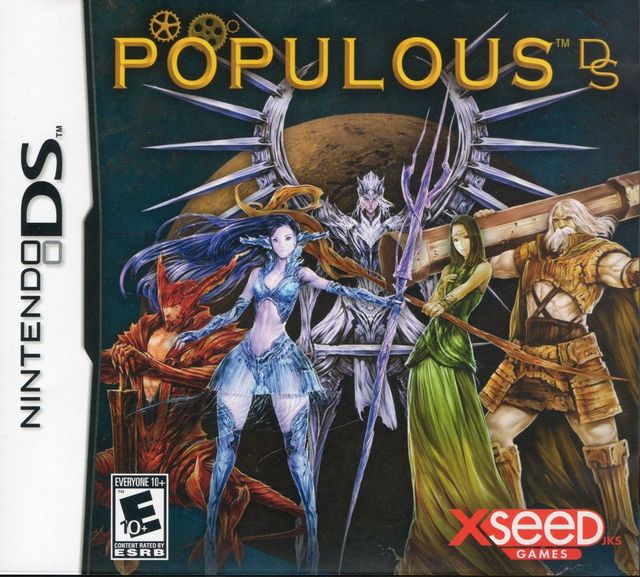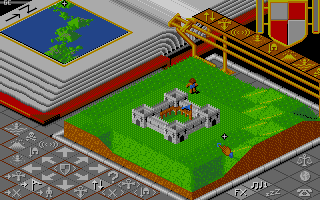
Series : Populous Developer : Bullfrog Productions Genres : Real-time strategy Randomized Levels Features : Password Save Graphics : Isometric graphics Metagame Class : FCU Ports Populous (1990 SNES)
not completed.
The first god game was created in 1989 by Peter Molyneux and Glenn Corpes. It was the second game released by Bullfrog, developed on Amiga 1000s. Seeing this game in 1989 was a revelation. The grandfather of simulation games, SimCity, came out earlier the same year, but the graphics was much more simplistic. In populous, you can mold a small world, rendered beautifully in isometric graphics of a quality unlike anything that came before it (Marble Madness being the only real contender). Little dudes walk around and build little buildings on your created landscape, and you are tasked to lead them to victory over other small dudes that worship a different god. The game has 5000 randomly generated levels on different tilesets.

Image source: mobygames.com
Review
2025-09-22

 (good)
(good)Passwords / Cheat Codes
- WEAVHIPHAM.
- SHADTED.
- SADWILLOW.
- World 40: EOAMELAS
World 60: HAMINMAR
Facts
Shield Bars - The 2 bars in the bottom-right corner of the info shield are context-dependent.
Here's the manual's description of the bars for settlements:
[..] the left bar (yellow) represents the size/strength and defensive value compared to a full castle. The green bar shows how close this building is to turfing out a new walker.
And for walkers:
[..] the bars represent the strength of the walker. There are three bars representing a walker's strength, only 2 of these bars are shown at any time. When the right-hand orange bar fills up, one small notch appears on the lefthand side orange bar and the right-hand side bar disappears. When both the orange bars fill up the display switches to show you a yellow bar and an orange bar, these work in a similar manner except they are higher values. A walker with a full yellow and orange bar is very tough.
It's like a 3-digit number, where it shows the two lower-most digits if the number is less than 100, and the two higher-most digits if the number is greater than 100.
Eject Walkers from Houses - From the manual:
Q How do I get people out of their houses?
A You can get people out of their houses by decreasing the size of the land that surrounds that house (e.g. with a hill). This reduces the size of that house and the number of people that can live in it, therefore turfing a walker.Music is Not Generative - After listening to the music for hours today, I'm recognizing themes. The meandering and simple nature of the music suggests random generation, but it is a loop of less than 2 minutes duration. I'm guessing that the music is using 3 tracks: ambient chords, wind, and a deep rumble that could represent tympanis or thunder.
On MiSTer (NTSC), this game runs at around 7 FPS. However, due to the usual Amiga magic, the mouse cursor moves at 60 FPS, and this is why the original game feels so much better than the console ports, even when using a mouse.
I assume 'GC' in the top left is Glenn Corpes, game designer, programmer, and artist.
Analysis
- According to SMS Power!, which contains a Populous world name generator, the game has 5119 worlds, each with a unique password. If the ROM is patched with this incredibly simple change:
ROM[305B]=81, it supports up to2^15=32768worlds. - Which must mean that the worlds are randomly generated.

